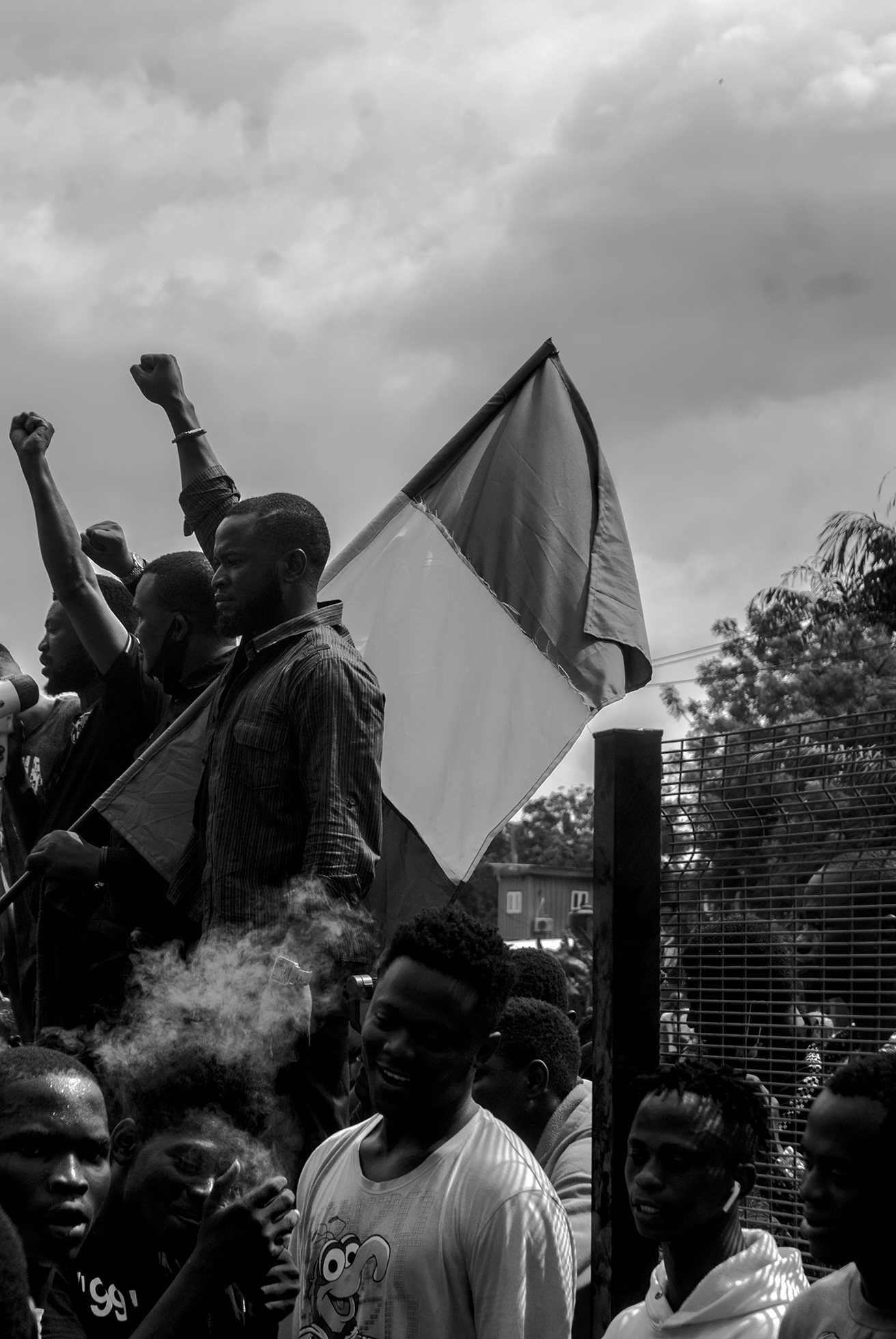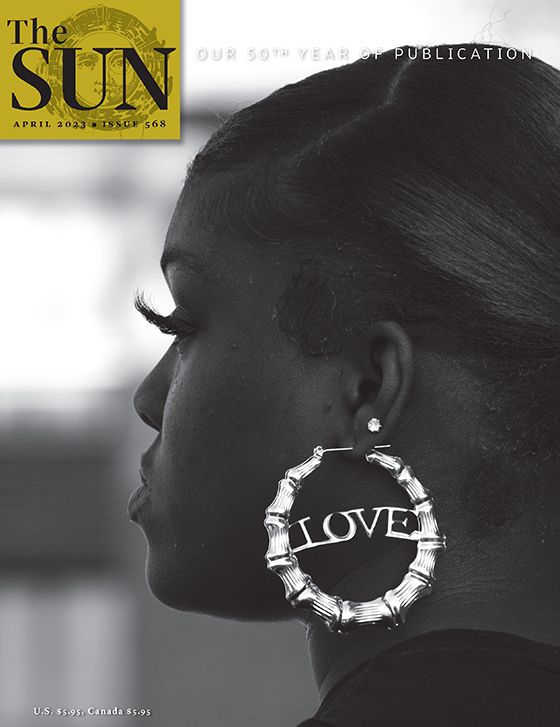October 2020: Lagos, Nigeria
In the weeks before the riots, I was about a month into my first MFA year, living the sheltered life of a fellowship-funded student and Zooming in to classes in New York from Lagos because of pandemic travel embargoes. To pass the time I made mood boards — mostly collages of things I could not afford: Togo sofas. Matisse sketches. Muller Van Severen grid shelves. This was months into COVID, and I had recently discovered lifestyle vloggers with niche appeal. In my Lagos one-bedroom, certain there would be an apocalypse any day now, I eased into my info-glut life, clicking on each video and watching with the singular focus of a new convert as a YouTube homemaker portioned food into containers. I grew apathetic to almost anything that wasn’t featured on an obscure German influencer’s channel. Here, I thought, according to the logic of pandemic-style parasocial relationships, was a person like me. Her apartment was shabby chic, like mine. What did it matter if hers had been in her family’s possession for generations and I was renting a cramped boys’ quarters? In the red wash of her kitchen’s mood lighting, she delivered updates on her life and performed ordinary tasks. I watched her soak cashew nuts, blitz them with baby tomatoes, and spread the paste over penne pasta, all the while whispering intimately to the camera about a set of new clothes she’d just ordered from Depop.
Meanwhile in Lagos, in real life, a video of a police shooting had gone viral, and anti–police brutality protests were beginning to gain momentum. The year kept shifting its surreal form. In the house next door the family matriarch died of COVID complications. Because of the pandemic, the family buried her without the feasting required for a woman her age. Then they sold their house to a developer and moved away, leaving the family cat behind. In the evenings while I read outside, the animal would come into my yard and sneak eerily close to me before stalking away. Around this time, in addition to everything else, a robbery gang began to send out formal letters, typed and addressed to the inhabitants of an entire street, warning of the criminals’ plans to visit and rob and asking people to prepare for them. It sounded like a bad joke, but they were deadly serious. They called themselves the One Million Boys. Vigilantes began patrolling the streets to guard the houses. I would wake in the middle of the night and hear the sound of their machetes scraping along the pavement of my narrow street, like the cry of an aggrieved nocturnal animal. Then, not far from my home, by the National Stadium, a man watching the protests was killed by a stray bullet. The shooter was a policeman. The curious bystander’s hands were tucked in his pockets when he went down.
The protesters were quite something to watch. On Zoom calls I would describe them to a friend in Brooklyn, who kept calling this the Summer of Discontent. What is happening to us does not have a name yet, I wanted to say. But it did not matter. The protesters were beautiful and bold, like revolutionaries. They stood on car hoods and police call boxes and tanks of diesel fuel. They draped their bodies in flags and hung FUCK YOU banners on the rails of footbridges. They inscribed slogans on their bodies and the roads they slept on. These people had been misgoverned all their lives and were attempting to conjure a free state by sheer force of will alone. And they did. For a while, at least. They formed a substratum government. They allocated resources, relying on cryptocurrency transactions and delivery apps. Crowdsourced lawyers showed up in holding cells and demanded the release of their comrades, undeterred by long bureaucratic processes and unafraid of police brutality. It was all very heady and precarious and about time. For years there had been unexplained disappearances. Young people, queer people, and sex workers would leave home and never return, or die on the whim of a trigger-happy policeman. There were unmarked graves, families with missing children. And now, in the middle of the pandemic, people were done with it.
The protest marches were peaceful at first. Protesters moved through the city, sometimes breaking into smaller groups and rejoining again at a central location. But cruel hierarchies became apparent among them. When the LGBTQ flags became hard to overlook, some said they did not want the queers to hold up their queer signs. This was not the right time. They did not want the anti–police brutality message to get mixed up with queer slogans. Could the queers please take their struggle somewhere else?
We worked ourselves into a frenzy. We all kept tweeting.
The days of protest began to take a toll on me, and I indulged my social-media algorithms without shame. Godlike, I muted certain hashtags and keywords in my Twitter feed. When my timeline suggested comedy skits to me instead of protest updates, I clicked on them without restraint. My Nigerian impulse, when things become untethered from reality, is to laugh. We Nigerians find a way to make the worst things funny. Or we dance. And online the dancers could not be stopped. Between the more solemn posts about the protests, their videos continued to go viral. Their moves were addictive, the life spans of the dance trends short, such that the novelty was self-renewing. People would go from raging against police brutality to arranging themselves in pairs or neat rows in sitting rooms, on front lawns, or on the wide lots of the public buildings where they continued to do their jobs as essential workers, and they would reproduce the newest dance routine with startling efficiency. Protests or not.
On October 19 I went shopping for good pillows. I needed them because my breathing had grown erratic — possibly a symptom of long-haul COVID, or possibly due to a chronic bronchial condition. On FaceTime family members observed my breathing with concern. They wondered if living alone was ill-advised at a time like this. I was sleeping badly and in need of a pick-me-up. First I stopped by the China Garden on Adeniran Ogunsanya Street and asked the mama-put if she had the moi-moi I liked: bean cake with flecks of tuna and a quartered egg wedged in. She did not. I walked to the nearby mall and wandered the aisles of shops. The herb and perfume-oil seller, from whom I bought peppermint and neem powder for my hair, tried again to convince me to buy a potion she swore would make me irresistible to any lover. I declined again. The bookshop did not have the book I wanted.
Outside the mall some people were talking excitedly about the protest marches, while others were talking about how the protests were none of their business. I was on the road between the mall and the stadium — where the bystander had been shot by a stray police bullet — when the riots started. I was holding a bag of pillows, cradling them, as somewhere within the city a new movement burbled to the surface. A rumor moved through the crowded street that the government had paid some equally young, equally angry, equally fed-up people to disrupt the protests, and they were coming toward us. I tried to hail a cab, to get home before the rioting began, but the cab drivers were no longer accepting passengers. I took out my phone and made a video of the road. It had become quiet, empty. At the gate of the mall, security guards urged people to shelter inside. I gave up trying to find a cab and took their advice. The other shoppers and I watched busloads of boys drive past, waving leafy branches and what appeared to be machetes. Or maybe I mistook the stems for blades. My memory falters.
The riots took over the streets, with their friendly bars and mama-put joints. The familiar chaos of aerial dishes and cable wires. The mansions with their Doric columns. The old houses with their heirloom decay and dusty fruit trees. We did not know which house, shop, or bar would be next. The rioters could not be appeased. They wanted to burn everything to the ground.
On October 20 I called friends to ask if they wanted to join the protests. I started to get ready, then realized that getting back home before the 4 PM curfew imposed by the government would be impossible without a car. A friend had forwarded me a text that seemed bogus, warning there would be a crackdown on people who defied the curfew. This was nothing new. The governor had been on Twitter asking people to stay home — a message that was easy to ignore in the heat of a protest. But that evening soldiers opened fire on unarmed protesters gathered at the tollgate in Lekki.
I cannot speak firsthand about much of what happened that day and in the days that followed. But I can say that young people were found dead, their bodies wrapped in blood-soaked flags. People were reported missing. On my street a politician several houses away made his staff take down the political-party banners hanging over his street-facing, burglar-proof wall, in the hopes that it would make his house less of a target. Without the blown-out face of the governor plastered all over it like a strange Warhol, the wall looked naked.
On the street next to mine, a day after the soldiers had opened fire on protesters, the burned wreckage of a mansion smoldered, sending smoke signals into the air. The bulk of the damage had been done within hours, but parts of the rubble continued to burn into the morning. People stopped on their way to work to look at the remains of the house. Its bleached wood panels, white walls, and tempered glass were now a blackened concrete mass. The papers reported that the governor’s family home had been burned, too.
Blurry footage surfaced online of people being shot, but most of the videos were too fragmentary to piece together a narrative. There were scenes of shoot-outs and people running madly in the streets. Many of the videos had unclear origins and were quickly replaced by new, even more shocking footage, which would be picked apart until someone with presumed knowledge revealed the footage as belonging to a different protest, from a different time or a different country.
When I returned to the mall days later, it was deserted. ATMs had been pulled out of walls and now hung loose or sat useless beside their concrete holes. Looted shops were boarded up. My neem seller’s shop had survived but was closed indefinitely. Online, people said, We will not forget. The government maintained that no one had been killed. They claimed soldiers had shot only into the air, and no one had been hit. Even with blood on the flags and in the streets.





